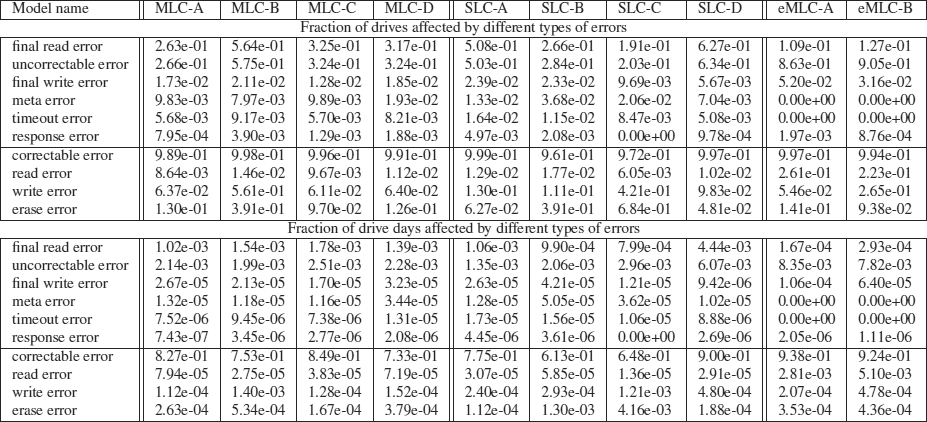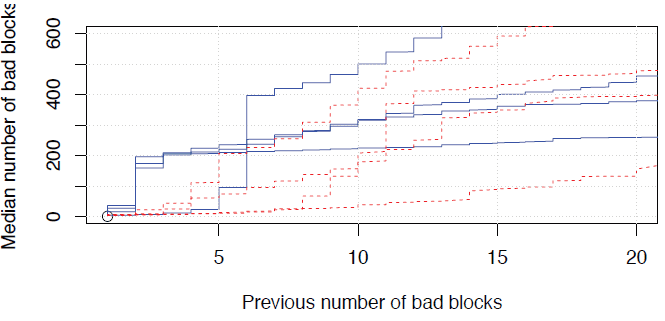SSD Reliability in the Real World: Google Experience
 At the FAST 2016 conference, Google presented a report with the statistics of reliability of various SSD-drives during long-term work in servers. Statistics collected on the total operating time in millions of hours over six years. This is the first large-scale and detailed study of the practical reliability of solid solids.
At the FAST 2016 conference, Google presented a report with the statistics of reliability of various SSD-drives during long-term work in servers. Statistics collected on the total operating time in millions of hours over six years. This is the first large-scale and detailed study of the practical reliability of solid solids.The report is published on pages 67-80 of the conference report collection .
There are ten models of SSD drives installed in Google servers (true, specific manufacturers are not called) of three types: MLC, eMLC and SLC. These are drives of both corporate class and budget consumer.
')
The experience of practical use brought some unexpected results.
Unexpectedly, the reliability of drives is influenced by age, not intensity of use .
Another unexpected result: the “professional” SLC drives are no more reliable than conventional MLCs .


It also turned out that bad blocks are constantly found in new drives, this is quite a common phenomenon. In this case, the more bad blocks initially, the more likely the emergence of hundreds of new bad blocks in the future. This is probably due to hardware failures.

According to statistics, 30-80% of SSD-drives appear at least one new bad block during the first four years of operation. Failure of the chip over the same period is observed in 2-7% of drives.

Another thing that Google researchers are focusing on: SSD failures occur less frequently than hard drives fail, but they are more insidious because the SSD has a higher uncorrectable error. At the same time, as mentioned above, the indicator does not depend on the number of read and write cycles, so the value UBER (Uncorrectable Bit Error Rate) in the documentation of the drive does not make sense.
Source: https://habr.com/ru/post/391153/
All Articles